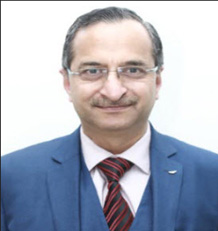IBM RFT Interview Questions: Q. 111 to 120
Q. 111: What are the Manual verification points?
Manual verification points are useful when we create the data for the verification point ourself, and we want to compare the data. For example, the data could be the result of a calculation or could come from an external source, like a database.
Manual verification point objects are constructed using the “vpManual” method. When we call this method, we provide the data before “performTest” is executed.
<<<<<< =================== >>>>>>
Q. 112: What are the dynamic verification points?
Dynamic verification points are created by “vpDynamic” method. These verification points raise the appropriate user interface the next time the script is played back. The user is able to insert verification point data tested against an object specified by the script.
Thus the user can avoid running of the test manually to the appropriate state before recording the verification point.Dynamic verification points are most useful when the TestObject is not mapped and not something that RFT would normally test.
<<<<<< =================== >>>>>>
Q. 113: How can we read the Windows registry with RFT?
We can read the information out of the database of windows registry by using RFT commands.
RFT provides following two commands to read values from the windows registry.
1) “getRegistryValue” command : For reading the string values from the registry.
2) “getRegistryIntValue” command : For reading the integer values from the registry.
The terms “REG_SZ” describe the string and integer types. Both of the commands take a type String argument, which contains the registry key to extract.
Both these commands give a message like “NoSuchRegistryKeyException” in case of a failure.
<<<<<< =================== >>>>>>
Q. 114: How can we pass data from one script to another?
We can pass the data from one script to the other by using different signatures of the “callScript” method.
Following are the two types of RFT scripts:
1) TheCaller script :It calls another script and passes parameters
2) TheCalled script :It receives the parameters and prints them to “System.out”
<<<<<< =================== >>>>>>
Q. 115: What are the best practices of Funcional Testing of HTML applicationa?
Few of the best practices for recording and playing back scripts to test HTML applications are given below:
1) Start recording first and then start the application.
2) Recording a hover on HTML menus.
3) Use “deleteCookies” method in the scripts.
4) Avoid including menu items in scripts.
5) Make sure Java applets are in full view during playback.
6) Use the “loadURL( )” method to change URLs.
7) Use “.size” property for INPUT elements.
8) Use toolbar buttons common to both browsers.
9) Use the close button to exit a browser.
10) Check the “.readystate” of the browser object.
11) Use “waitForExistence” method to compensate for browser startup speed
<<<<<< =================== >>>>>>
Q. 116: How do we handle pop-up message boxes during recording of scripts in Netscape?
When recording a script in Netscape, pop-up message boxes like encryption notices frequently appear. When recording a crossbrowser script, we do not want to include these message boxes, because they usually do not appear in Internet Explorer.
We can fix this problem by taking actions like:
1) Pause the recording when a pop-up message appears.
2) Select any check box on the message that prevents the message from appearing again.
3) Click Cancel to close the message box.
4) Resume recording.
Alternatively we can modify our script as well to handle these message boxes,
<<<<<< =================== >>>>>>
Q. 117: How do we test many URLs without configuring the application?
When we want to test a lot of different URLs, the Applications list becomes very lengthy. If we do not want to add a URL to the list, we can use the following “startBrowser” command in an empty script to test it.
1) Create a new functional test script without recording.
2) On a blank line, type the following command: startBrowser (“url”);
3) Save the script and run it.
4) When the page is displayed, on the RFT toolbar, click Insert Recording into Active Functional Tester Script and start recording against the page.
<<<<<< =================== >>>>>>
Q. 118: How do we run RFT on Linux?
All functionalities of RFT work on Linux except its recorder.
We can test our applications using RFT on Linux in following two ways:
1) We can record a script on Windows and export it to Linux. We can then play it back on Linux.
2) We can write our own scripts, by using the “Test Object Insert tool”. Instead of creating an object map through recording, we can populate it outside of the recorder by opening the map and selecting objects in the test application.
We can insert verification points as well without recording, by opening the Verification Point wizard from the Script Explorer.
<<<<<< =================== >>>>>>
Q. 119: Which features of RFT can be installed on Linux?
While installing the RFT package, we can install only the Functional Tester – Java Scripting on Linux.
<<<<<< =================== >>>>>>
Q. 120: What are the integrational limitations of Rational products on Linux?
1) Rational “TestManager” main application does not run on Linux. But we can install “TestManager Agent” on Linux and run RFT scripts in that agent.
For this we need to install the RFT agent software on the agent computer.
2) The integrations with Rational Robot and Rational Administrator do not work on Linux.
Continue to Next Part : Q 121 to 130

An expert on R&D, Online Training and Publishing. He is M.Tech. (Honours) and is a part of the STG team since inception.
